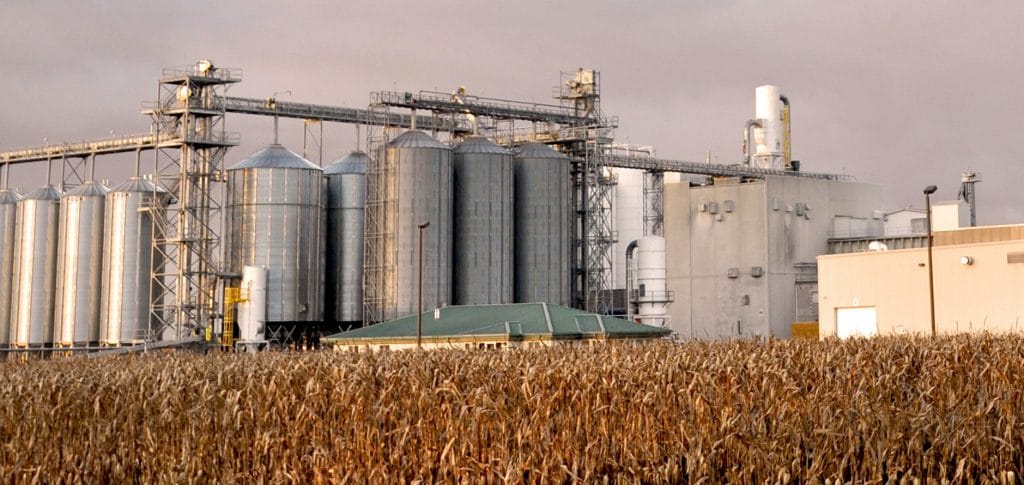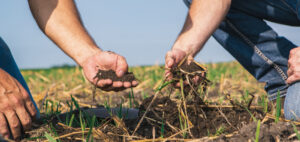Tips to Producing Food-Grade Corn, part 4 – Drying, Storage & Handling
January 28, 2019
This is the last post in our four-part series on producing food-grade corn. Here are links to the first three parts in case you missed them:
- Part 1 – Field & Seed Selection
- Part 2 – Disease Identification, Management & Prevention
- Part 3 – Corn Harvest
Safe and effective storage of corn on-farm is an important step to preserve grade, prevent damage from molds and insects, and ensure food safety of the quality corn that’s harvested.
Here are Grain Millers’ Crop Specialists’ top 10 tips for drying, storing, and handling of food-grade corn.
1. THOROUGHLY CLEAN BINS
All bins and handling equipment – regardless of size/capacity,
2. COMPLETELY SEAL BINS
All bins, regardless of size or structure, must be able to completely seal to prevent water from getting to the grain (via rain, snow, wind, etc.) and/or insect infestation. All bins should have tight hatches and covered vent openings. There should be a clean area around the bins with no weeds, piles of debris, or old grain spillage in order to avoid insect and mold growth. Repair any hole, crack, or seam with a food-safe, strong material prior to filling the bin.
3. UNIFORMLY DRY AND COOL BEFORE LONG-TERM STORAGE
All corn must be uniformly dried and cooled to ambient temperatures prior to long-term storage (over 1 month). Although some “equilibration” of moisture can occur in grain masses, you should NEVER blend wet corn (over 15%) with dry grain, and simply hope for moistures to “even out”. Insects will seek out the damper grain pockets, and molds and mycotoxins will grow quickly in ambient air. Immediately after drying grain, attempt to cool it to within 10 degrees F of outside air.
4. DRY AT ACTUAL GRAIN TEMPERATURE
Never dry corn over 110 degrees F (actual grain temperature) and be sure to use high volumes of air. Drying at higher temperatures will increase the number of stress cracks. A high amount of stress cracks reduces the quality of the corn and limits the use in some food markets.
5. MONITOR MOISTURE LEVEL
We recommend moistures of clean corn grain to be less than 15% moisture when stored or delivered in the fall and winter, and not higher than 14.5% moisture if stored and delivered in the following spring. During summer and early fall, it is recommended that moisture is reduced to 14% to help reduce mycotoxin risk. Grain Millers requires 14.5% or less moisture at delivery.
6. MECHANICALLY CLEAN
If the harvested corn contains significant levels of foreign material, cracked, broken, or diseased kernels we highly recommend cleaning the grain with a mechanical grain cleaner/sieve and/or air volume prior to storage. Increased handling of corn will cause higher levels of broken kernels and other foreign material. Foreign material (fines, weed seeds, dirt, etc.) is normally higher in moisture than the actual grain kernels. The corn grain stores much better with air movement throughout the bin, and some relatively easy cleaning prior to long-term binning facilitates air movement through the grain.
7. VENTILATE AND ADJUST TEMPERATURE
Provide for adequate ventilation of the grain via aeration fans, attempting to keep the grain within 10 degrees F of ambient outside temperature.
During the fall and early winter, cool the grain on a regular basis until the grain temperature nears freezing. For extended storage periods, you should warm the grain in the spring, attempting to bring the grain up 5 degrees F (or less) at a time to avoid moisture formation in the grain mass. During summer months, aerate during cool, dry nights to hold grain temperatures down.
It is critical that once a temperature change is initiated, it must be continued until complete. If this is not done, when the aeration is stopped, the warm, moist air will condense on the cool grain, and a crust will develop, usually within the top few feet of the grain mass. Depending upon bin size, the volume of grain stored in that bin, and bin manufacturer, a general rule of thumb for effective grain aeration is at least 1/4th CFM/bu.
8. MONITOR MOISTURE AND TEMPERATURE
Develop a plan and schedule for safe grain moisture and temperature monitoring. During the fall and spring, we recommend checking the bins weekly to avoid rapid moisture and temperature variations. Remember, on warm spring days, the grain just inside the shiny metal bins on the sunny side of bin warms quickly, and far slower on the shaded side. The bin can then form its own “atmosphere,” and grain spoilage can occur.
9. “TURN” BINS IF AERATION IS NOT AN OPTION
If aeration is not an option for a bin, many farmers have successfully “turned” (emptying and refilling) a bin while incorporating a rapid, effective cleaning operation to remove more fines, debris, and light material. Many farmers have reported small increases in test weights when performing this operation in addition to being able to store the grain longer. Effective, licensed fumigations can also be performed along with this practice.
10. APPLY APPROVED FUMIGANTS
Diatomaceous Earth application is approved for organic, but farmers must notify Grain Millers of its use prior to delivery. Licensed grain fumigants can be used for non-organic certified corn stored for several months on-farm but must not leave ANY traces of residues.
NEED ASSISTANCE?
If you have questions about drying, storing, or handling of food-grade corn, or any other topics, our Crop Sciences team is here to help. Please feel welcome to contact your Grain Millers representative.
This wraps up our series on tips for producing food-grade corn. If you missed a previous post, you can view them all here:
- Part 1 – Seed & Field Selection
- Part 2 – Disease Identification, Management & Prevention
- Part 3 – Corn Harvest
- Part 4 – Drying, Storage & Handling (you are here)
Please note: The information in this post is a reference tool for corn growers in the upper Midwest of the United States, including parts of Minnesota, Wisconsin, North Dakota, South Dakota, and Iowa. This information is believed to be accurate and complete, however, it is designed for informational purposes only and Grain Millers, Inc. makes no representation, warranty, or guarantee that desirable results will always be obtained if followed.


